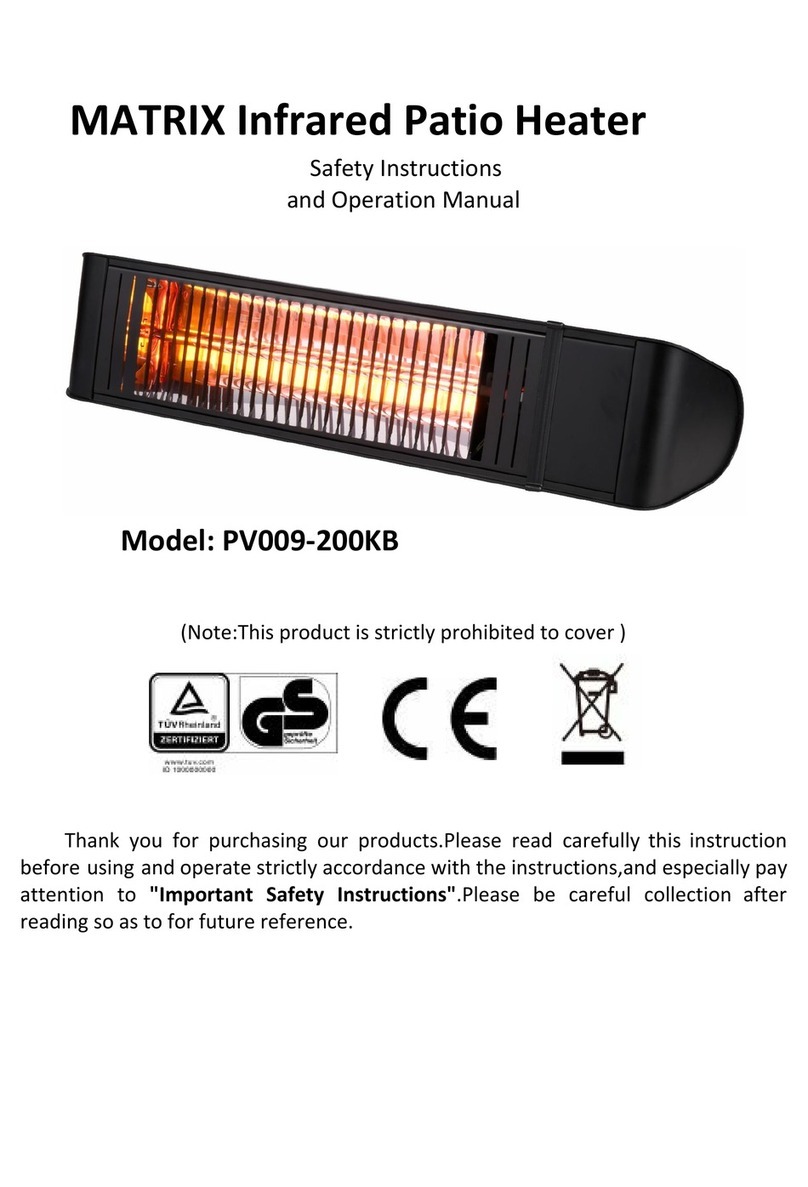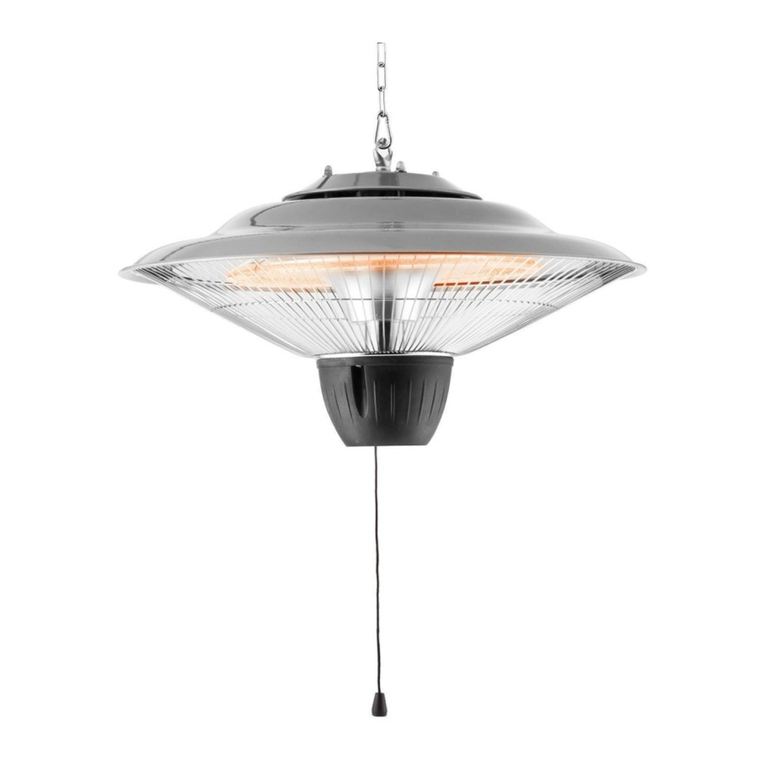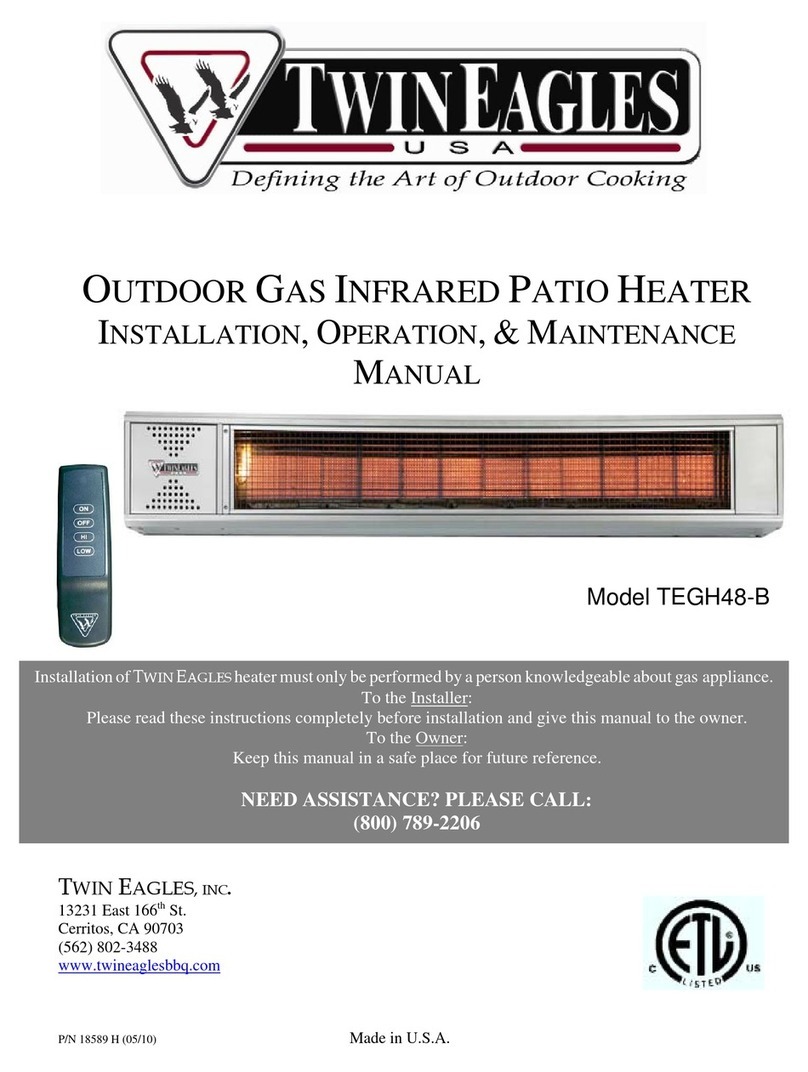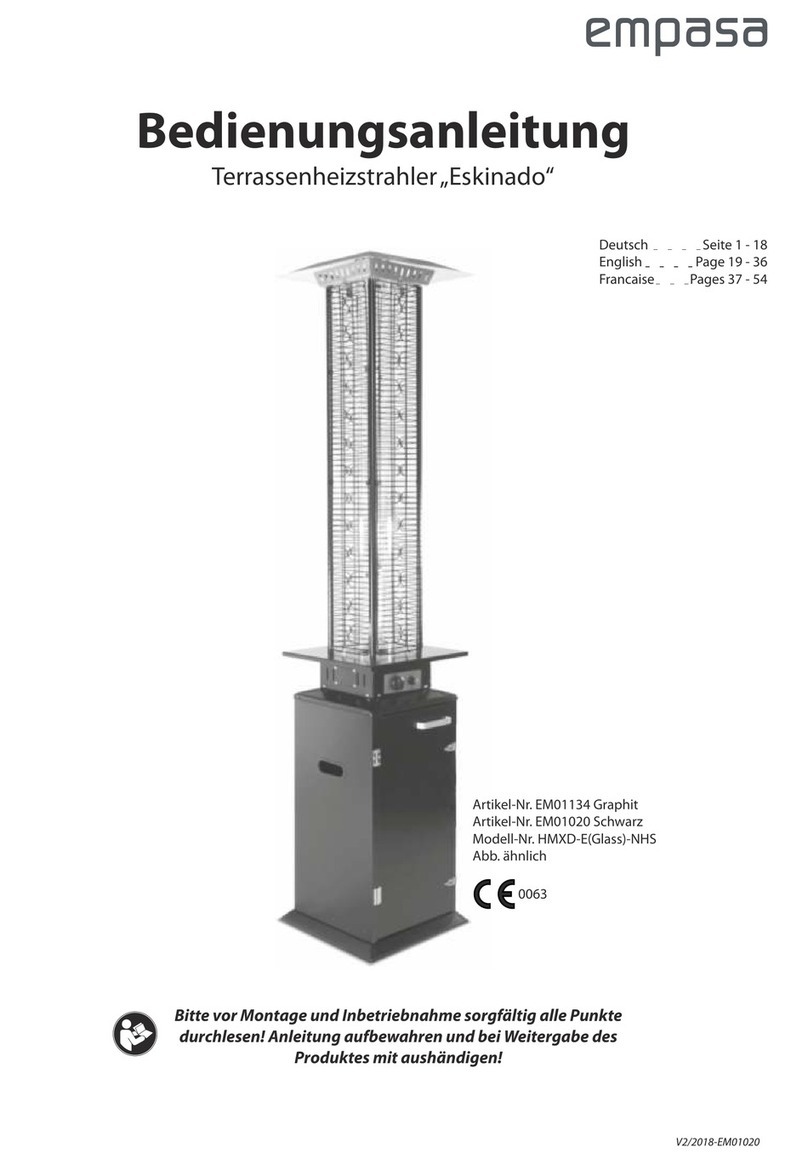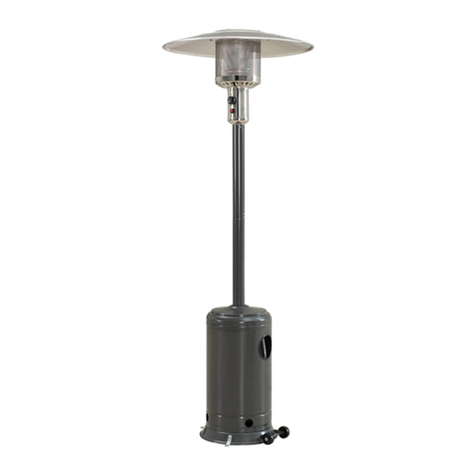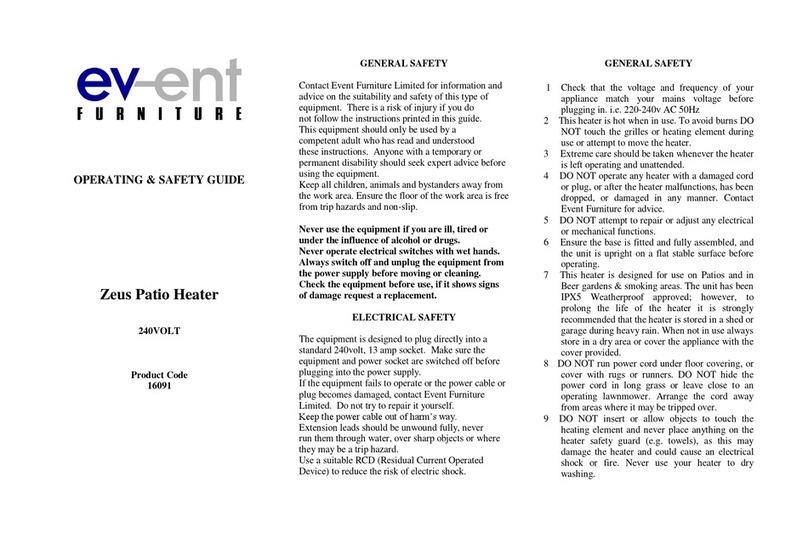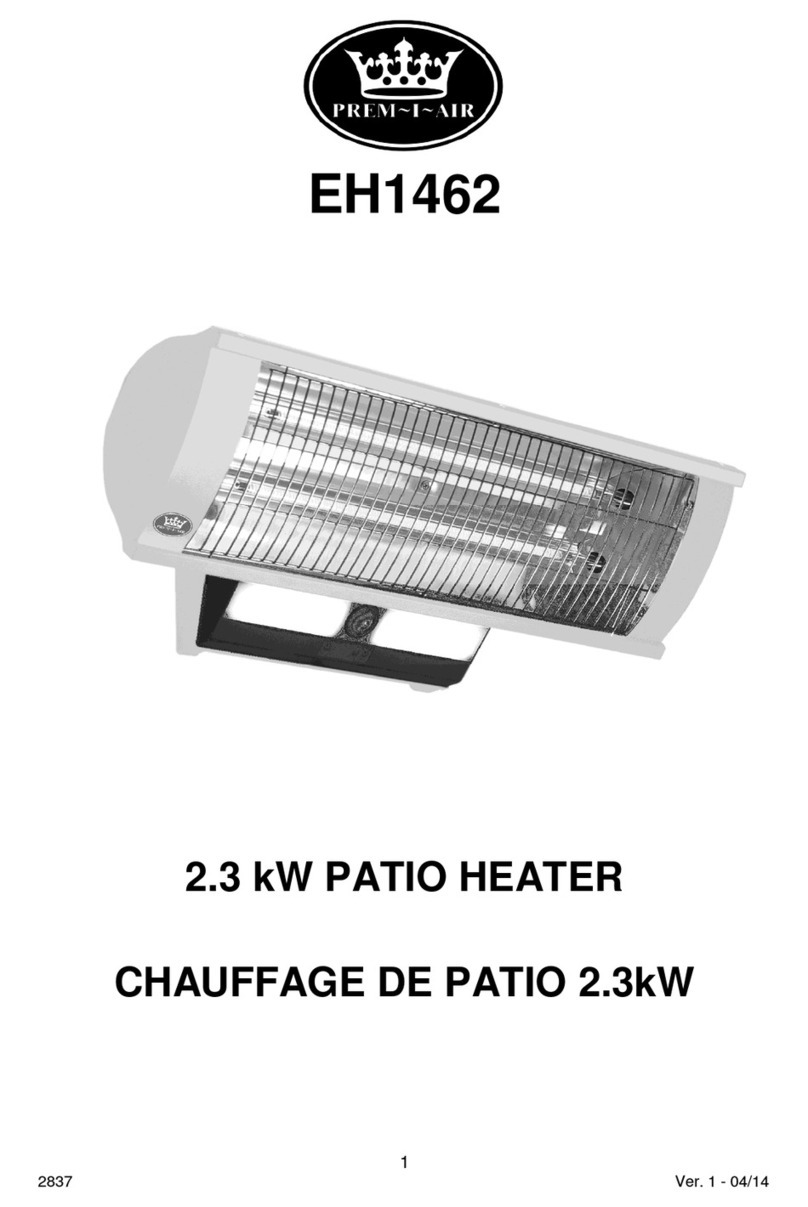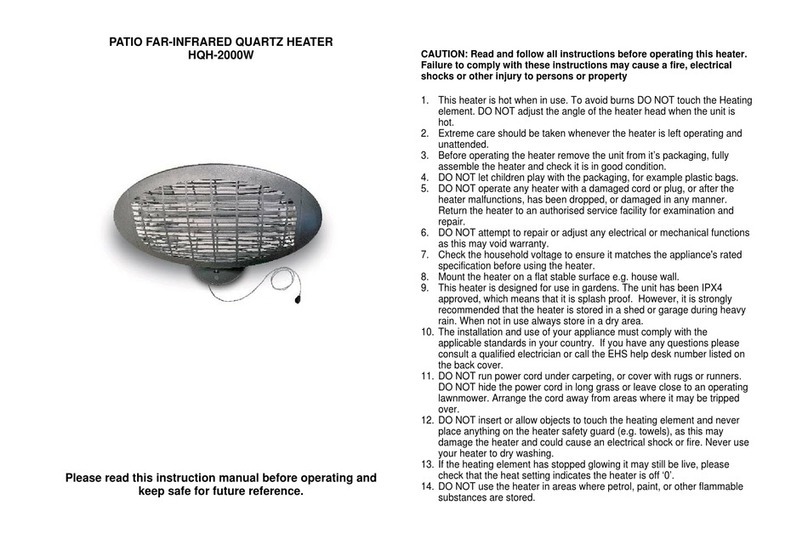
2
GAS INSTALLATION REQUIREMENTS
Each patio heater is set and tested at the factory for the type of gas supply to be used. Identify the type of
gas, either natural gas or LP gas and make sure that the marking on the nameplate (rating plate) matches the gas
being supplied to the heater. The nameplate is located behind the component compartment access door.
CODE REQUIREMENTS
•Installation must be in accordance with local codes, or in the absence of local codes, with the latest
edition of the National Fuel Gas Code, ANSI Z224 and National Electrical Code ANSI/NFPA 70, and
for Canada, the latest edition of CAN/CGA-B149.1 and B149.2 and Canadian Electrical Code, CSA
C22.1 Part 1 and Part 2.
•Heaters to be installed in Aircraft hangars must be installed in accordance with American National
Standards for Aircraft Hangars, ANSI/NFPA No. 409.
•Heaters to be installed in Public Garages must be installed in accordance with NFPA No. 88A,
Standards for Parking Structures.
•Heaters must be installed so that minimum clearances marked on the heaters will be maintained from
vehicles parked below the heater.
•When equipped with an AC/DC adapter, the heater must be electrically grounded in accordance with the
National Electrical Code, ANSI/NFPA 70, when an external electrical source is utilized. In Canada, the
CSA Canadian Electrical Code, C22.1 Part 1 applies.
GAS SUPPLY
It is important that the inlet gas piping system be adequately sized for the heater(s) it serves. The gas inlet and
manifold pressure required for the heater is listed below. For gas supply line pressures in excess of ½ psig,
consult with your representative or the factory.
a. A minimum pipe size of ½” is required for inlet piping. A ½” leaver handled shut-off gas valve should
be installed within 6 feet of the appliance for servicing the unit.
b. Check with local and state plumbing and heating codes regarding sizing of gas lines.
c. All gas connections to the heater(s) must be sealed with a gas pipe compound resistant to liquefied
petroleum gasses.
d. Installation of a drip leg in the gas supply line is going to each heater is required to minimize the
possibility of any loose scale or dirt within the gas supply line from entering the heater’s control system.
e. When checking for gas leaks, do not use an open flame. Use the Leak Test procedures using liquid soap
and water solution.
f. For gas supply line pressure in excess of ½ psig, consult the factory or your local representative.
g. Installation of 1/8” NPT plugged tapping accessible for test gage connections is required upstream of the
gas supply connections to the heater.
IMPORTANT
All gas connections should be made by a qualified technician in accordance with all requirements of the
authority having jurisdiction. The technician must be knowledgeable, specifically trained and experienced in
the installation of this type of gas equipment and related gas system components and with all precautions
required regarding this type of equipment. Some states or provinces require installation and service personnel to
be licensed. If your state or province is such, be sure your contractor bears the appropriate license. If a person
does not meet all requirements and is not qualified for this installation he/she shall not attempt to repair, replace,
install nor do any other type of work or service to this equipment.


